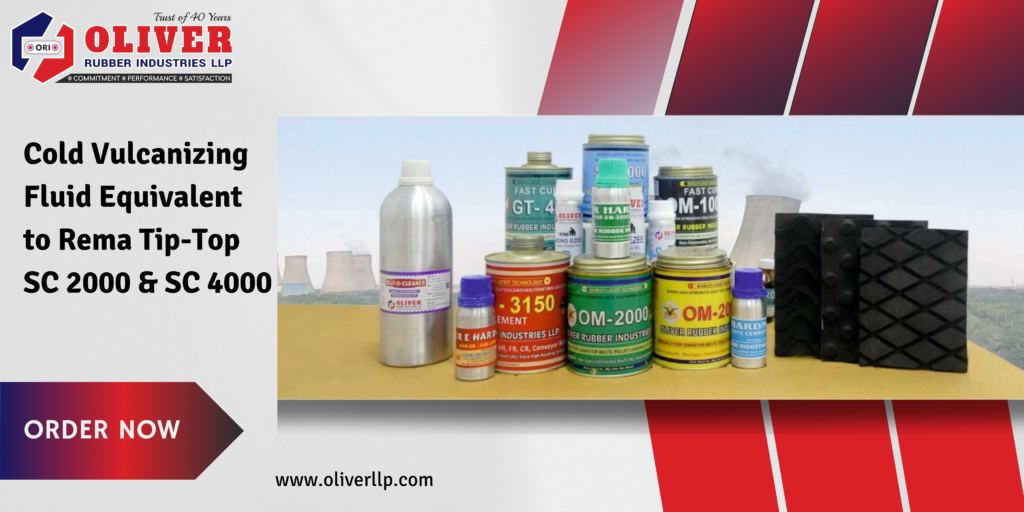Conveyor systems are the backbone of many industries, facilitating the seamless movement of materials and products across manufacturing units, warehouses, and processing plants. At Oliver Rubber LLP, we take pride in being one of the foremost manufacturers of high-quality rubber sheets in India. With our commitment to excellence and innovation, we have established ourselves as a trusted name in the industry. Our extensive range of rubber sheets caters to diverse applications across various sectors, including automotive, construction, industrial, and more. In this blog post, we’ll walk you through the detailed procedure for Conveyor Erection, ensuring that your conveyor systems are installed efficiently and perform at their best.
Why Proper Conveyor Installation Matters
The installation and erection of a conveyor system are critical to its long-term performance. A poorly installed conveyor can lead to operational inefficiencies, frequent breakdowns, and costly repairs. On the other hand, a well-executed Conveyor Erection process ensures smooth operation, minimal downtime, and an extended lifespan for your equipment. Whether you’re setting up a belt conveyor for a manufacturing unit or a heavy-duty system for industrial applications, following a standardized procedure is key to success.
At Oliver Rubber LLP, we understand that every customer has unique requirements. That’s why we offer customizable solutions to tailor our rubber sheets according to your specific dimensions, thickness, hardness, and other parameters. Our high-quality pulley lagging sheets with adhesive cold vulcanizing are designed to prevent belt slippage and enhance the durability of your conveyor belts—making them an essential component of the erection process.
Step-by-Step Conveyor Installation & Erection Procedure
Below is a detailed guide to the Conveyor Erection and Belt Conveyor Erection process, ensuring precision and efficiency at every stage.
1. Planning and Preparation
Before any physical work begins, thorough planning is essential. This stage involves:
- Site Assessment: Evaluate the installation site to determine the layout, space availability, and environmental conditions (e.g., temperature, dust, or moisture levels).
- Design Review: Study the conveyor system’s blueprints and specifications to ensure all components align with the intended application.
- Tool and Material Checklist: Gather all necessary tools, equipment, and materials, including belts, pulleys, rollers, frames, and our premium pulley lagging sheets from Oliver Rubber LLP.
- Safety Protocols: Establish safety measures for the installation team, such as wearing protective gear and adhering to site-specific regulations.
Proper preparation minimizes delays and ensures a smooth erection process.
2. Foundation and Structural Setup
The foundation provides the stability needed for the conveyor system. During this phase:
- Base Construction: Install a level concrete foundation or steel base to support the conveyor structure.
- Alignment Check: Use laser tools or leveling instruments to ensure the foundation is perfectly aligned. Misalignment at this stage can lead to belt tracking issues later.
- Anchor Installation: Secure the conveyor frame to the foundation using anchor bolts, ensuring it can withstand operational vibrations and loads.
A strong foundation is the cornerstone of successful Belt Conveyor Erection.
3. Assembly of Conveyor Components
With the foundation in place, it’s time to assemble the conveyor system:
- Frame Installation: Erect the conveyor frame, ensuring all sections are securely bolted or welded as per the design.
- Roller and Pulley Mounting: Install idlers, rollers, and pulleys along the frame. At this stage, apply Oliver Rubber LLP’s pulley lagging sheets with adhesive cold vulcanizing to enhance grip and prevent belt slippage.
- Motor and Drive System: Mount the motor, gearbox, and drive system, connecting them to the pulleys via belts or chains.
Precision during component assembly is crucial to avoid operational hiccups.
4. Belt Installation
The conveyor belt is the heart of the system, and its installation requires careful attention:
- Belt Placement: Unroll the conveyor belt and position it over the rollers and pulleys. For large systems, use a belt-pulling mechanism to ensure even tension.
- Splicing: Join the belt ends using vulcanization or mechanical fasteners, depending on the belt type and application.
- Tensioning: Adjust the belt tension to the manufacturer’s specifications. Proper tensioning prevents slippage and ensures efficient power transmission.
Our pulley lagging sheets play a vital role here, providing the necessary friction to keep the belt in place during operation.
5. Alignment and Tracking
Once the belt is installed, alignment and tracking are critical to prevent wear and tear:
- Belt Alignment: Check that the belt runs centrally along the rollers and pulleys. Adjust idlers or pulleys if necessary.
- Tracking Test: Run the conveyor at a low speed to observe belt movement. Fine-tune the alignment until the belt tracks perfectly without drifting.
This step is especially important in Belt Conveyor Erection, as misalignment can lead to premature belt damage.
6. Testing and Commissioning
Before putting the conveyor into full operation, conduct thorough testing:
- Dry Run: Operate the conveyor without a load to check for unusual noises, vibrations, or misalignments.
- Load Test: Gradually introduce the intended load and monitor the system’s performance under real-world conditions.
- Final Adjustments: Make any necessary tweaks to tension, alignment, or component positioning based on test results.
Once testing is complete, the conveyor is ready for commissioning.
7. Maintenance Planning
The erection process doesn’t end with installation. To ensure long-term performance:
- Schedule Regular Inspections: Check belts, pulleys, and rollers for wear and tear.
- Lubrication: Keep moving parts well-lubricated to reduce friction.
- Replacement Parts: Stock high-quality spares, such as our rubber sheets and pulley lagging products, for quick replacements.
At Oliver Rubber LLP, we know how important it is for conveyor belts to run smoothly in your manufacturing units. Our durable, customizable solutions help you maintain operational efficiency with minimal downtime.
Benefits of Choosing Oliver Rubber LLP for Your Conveyor Needs
When it comes to Belt Conveyor Erection, the quality of materials can make or break the system. Our rubber sheets and pulley lagging products offer:
- Durability: Engineered to withstand harsh industrial conditions.
- Customization: Tailored to your specific conveyor requirements.
- Performance: Enhanced grip and reduced slippage for optimal belt operation.
By partnering with Oliver Rubber LLP, you’re investing in a conveyor system that delivers reliability and longevity.
Conclusion
The Conveyor Erection and Belt Conveyor Erection process is a meticulous task that demands expertise, precision, and high-quality materials. From planning and foundation setup to belt installation and testing, each step plays a vital role in ensuring your conveyor system operates at peak efficiency. At Oliver Rubber LLP, we’re proud to support this process with our top-tier rubber sheets and pulley lagging solutions, designed to meet the diverse needs of industries across India and beyond.
Whether you’re installing a new conveyor or upgrading an existing one, trust Oliver Rubber LLP to provide the products and expertise you need for success. Contact us today to learn more about how we can enhance your conveyor systems with our innovative solutions!



